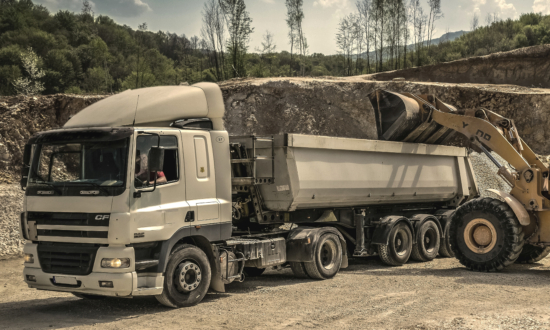Research: Retreads offer hyperelastic tyre characteristics
 According to the paper, the researchers’ findings are “promising to predict the behaviour of re-treaded tyre rubber” and can be “used to improve the product [retreaded truck tyres] and its utility in small tyre re-treaders, customers and policymakers.” (Photo: Ivan; Pexels)
According to the paper, the researchers’ findings are “promising to predict the behaviour of re-treaded tyre rubber” and can be “used to improve the product [retreaded truck tyres] and its utility in small tyre re-treaders, customers and policymakers.” (Photo: Ivan; Pexels)
Does the hyper-elasticity of retreaded tyres impact their behavioural quality? Uday Gudsoorkar and Rupa Bindu, two researchers working within the department of mechanical engineering at the Dr DY Patil Institute of Technology in Pune, India sought to answer this question and more by using computer-aided finite element analysis. Their paper “Computer simulation of hyper elastic re-treaded tire rubber with ABAQUS”, which was published in November 2020 in Materials Today: Proceedings used a combination of qualitative and quantitative methodologies to measures forces across the tread belt in a compute simulation. These virtual samples were then compared with laboratory examples. According to the paper, the researchers’ findings are “promising to predict the behaviour of re-treaded tyre rubber” and can be “used to improve the product [retreaded truck tyres] and its utility in small tyre re-treaders, customers and policymakers.”
The fact that the researchers opted to analyse the hyper-elastic properties of retreads is remarkable in and of itself for the simple reason that, while retreaders have often anecdotally argued that their products not only equal the performance characteristics of new tyres, they can – in some respects – offer additional benefits. However, so far there has been little peer-reviewed evidence of such additional properties. Gudsoorkar and Bindu’s paper, therefore, begins to address this deficit by specifically investigating the hyper-elasticity of retreads. The distinction between elasticity and hyperlasticity is noteworthy because, while all tyres utilise vulcanisation in order to exploit the elastic properties of rubber at the same time as maintaining the resilience of products, hyper-elastic properties are quite literally more elastic. To use a more formal definition, hyperelastic materials feature rubber or rubber-like properties in which the elastic deformation can be extremely large.
According to Gudsoorkar and Bindu, the hyper elastic properties of retreaded tyres have been “unnoticed by practioners” and “there are no established guidelines to follow stress strain behaviour”. As a result, the researchers used finite element in ABAQUS, to analyse deformation states. Regression analysis was conducted to find out the association between rubber specimen stress and deformation. The value of the R2 determination coefficient was found to be “very close to 1” (specifically 0.999) and therefore “in both the constitute models, hyper elasticity does affect the quality of re-treaded tyre rubber”. The benefits of the paper’s findings are twofold, firstly the research helps lay the groundwork for further analyses of predicting retreaded tyre rubber behaviour and secondly tyre retreaders and the retreading industry in general can use this knowledge to redesign retreading materials in order to take advantage or mitigate the hyper-elastic properties of retreads.

 Michelin
Michelin


Comments